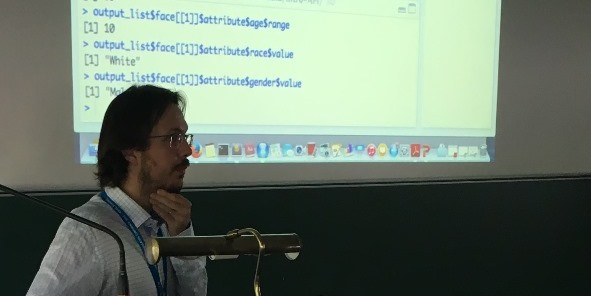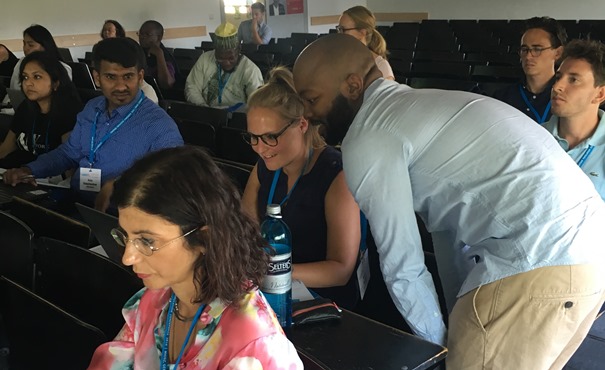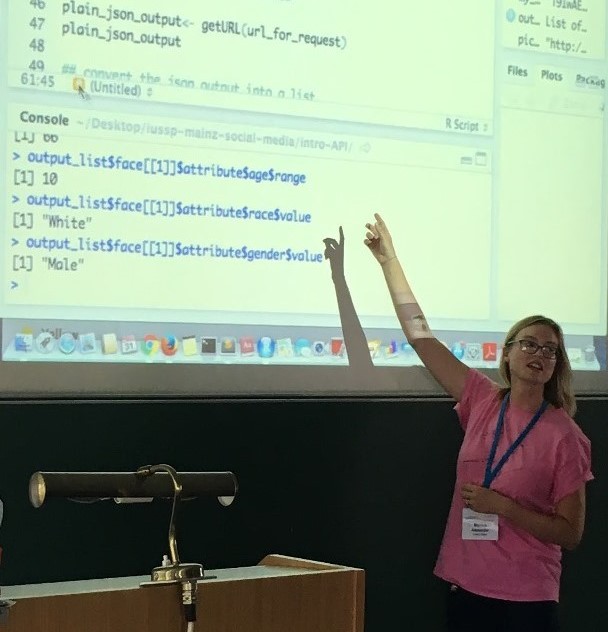Training Workshop on Web, Social Media Data and Demographic ResearchMainz, Germany, 31 August 2016
The IUSSP Scientific Panel on Big Data and Population Processes organized a Training Workshop on Web, Social Media Data and Demographic Research at the 2016 European Population Conference. The workshop was supported by grants from the William and Flora Hewlett Foundation to the IUSSP and the Population Association of America (PAA) to support demographers' participation in the Data Revolution.
The half-day workshop, which was held in Mainz, Germany on August 31st, focused on building an integrated workflow for accessing social media data, analyzing them using demographic methods, and creating interactive data visualizations. It provided an introduction to tools such as Application Programming Interfaces (APIs) for collecting data from social media (e.g., Twitter), programmable data visualizations, and offered examples of demographic methods that could be used to gain insights from social media data.
Kivan Polimis and Monica Alexander then presented a series of hands-on tutorials about gathering data with the Twitter Streaming API and creating data visualizations with R. Participants followed a walk-through on their own laptops, using R code and datasets that were distributed in advance, as well as data collected in real-time during the workshop. In addition to showing how to access the APIs and gather data, presenters introduced simple examples of the type of analyses that can be done. Kivan presented on using features from the Face++ API in addition to the Twitter API, participants used a sentiment analysis on tweets to assess demographic differences in physical activity attitudes (e.g., tweets referencing #running or #jogging).
Some thirty participants attended the workshop (a number of participants who had registered were unable to attend due to delays at Frankfurt airport). A mailing list was set up after the training workshop held at the 2016 PAA Annual Meeting in order to facilitate communication among researcher interested in Web data, social media data and demography. Anyone who is interested in joining the mailing list can do so by following instructions on this webpage: https://mailman1.u.washington.edu/mailman/listinfo/digital-demog.
See also:
A similar training workshop will be organized at the forthcoming ALAP/ABEP conference in Foz de Iguaçu, Brazil in October 2016.
|
|

 In the first part of the workshop
In the first part of the workshop 
 Monica then demonstrated how to create data visualizations with R Shiny. With the Shiny web application, participants were able to interactively and visually compare sentiments towards physical activity by demographic characteristics such as gender and age. Emilio concluded with a discussion on applying formal demographic methods (e.g., growth rate estimation from population age structure) to social media platforms in order to understand changes over time in populations of "online objects".
Monica then demonstrated how to create data visualizations with R Shiny. With the Shiny web application, participants were able to interactively and visually compare sentiments towards physical activity by demographic characteristics such as gender and age. Emilio concluded with a discussion on applying formal demographic methods (e.g., growth rate estimation from population age structure) to social media platforms in order to understand changes over time in populations of "online objects".